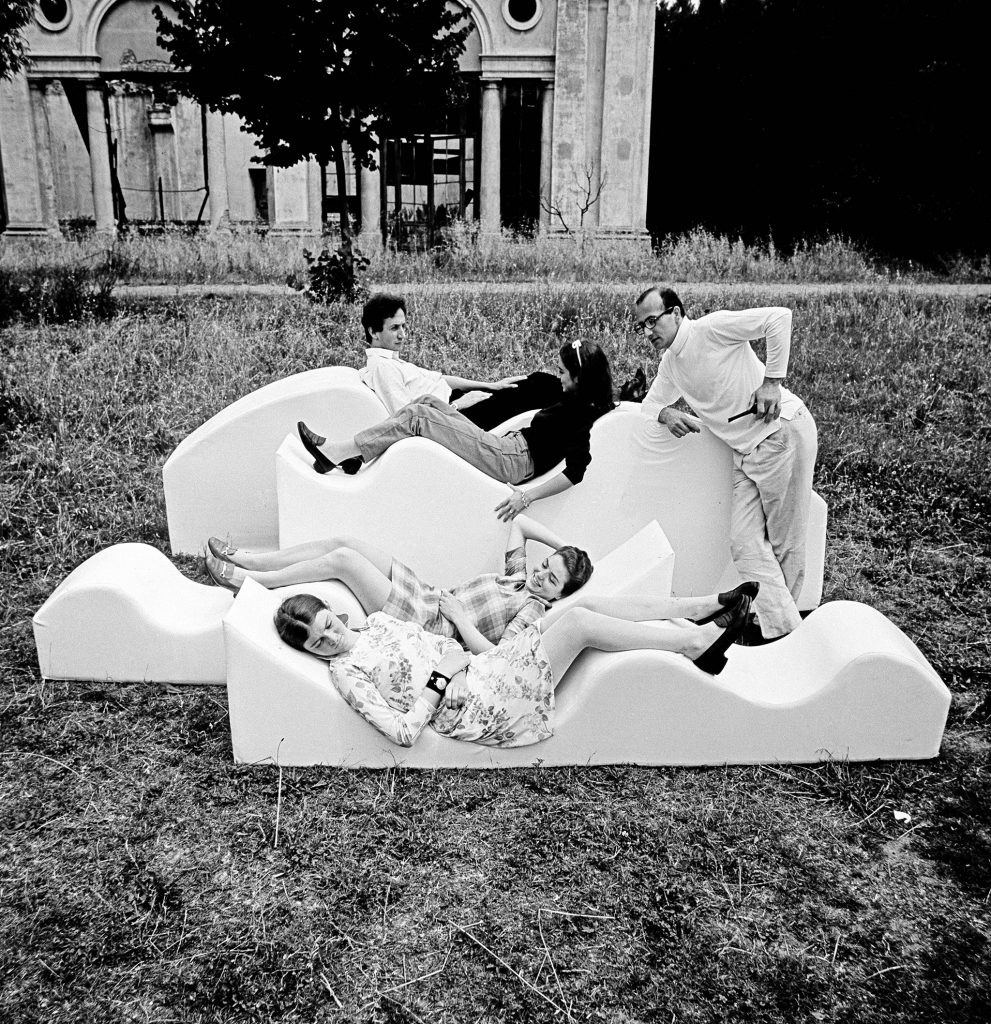
For Andrew Blauvelt, the June 18 opening of “Hippie Modernism: The Struggle for Utopia” at the Cranbrook Art Museum represents both a scholarly interest and a chance to bring to life a piece of Cranbrook’s own history.
“I was interested in looking at art history that was kind of forgotten by other art historians,” says Blauvelt, a graduate of the Cranbrook Academy of Art in design and the new director of Cranbrook’s Art Museum. Prior to his appointment, he was a senior curator of research, design and publishing at the Walker Museum of Art in Minneapolis, where he first assembled the exhibit with the assistance of curators from the University of California-Berkley Art Museum.
“They were interested in new things, like sound, that weren’t even considered art,” says Blauvelt, a specialist in the history of design. But the counterculture of the 1960s and ’70s, with its emphasis on seemingly ephemeral experimentation, has proven quite durable.
“They were interested in ideas that could influence everyday life,” Blauvelt says. He recalled during an interview with The Oakland Press that when he was a student at Cranbrook in the 1980s, the hippie movement was considered best forgotten in the art world.
“Now a lot of it seems prescient,” he says. “All that has come since then culturally and socially has been influenced by the counterculture, he says. “You can’t get to Whole Foods without the counterculture and its emphasis on locally grown food.”
Blauvelt noted that cities such as Minneapolis now have large, vibrant market and restaurant cultures built on locally grown food.
“They were interested in the miniaturization of technology. Sometimes they didn’t quite have the technology,” he says, noting the exhibit includes a pair of glasses that could be considered a forerunner of Google Glass. “
“A lot the (artists) were engineer types,” Blauvelt says. “Back then, the computers were for the military and IBM. You don’t get to the (smart phone) without the counterculture.”
The product concepts and designs of figures such as Steve Jobs, Steve Wozniak and Bill Gates were heavily influenced by notions of personal creativity that came directly from the counterculture, which reached beyond art, music, design, food and technology, he says.
“The first re-cycling programs and up-cycling came from the counterculture,” Blauvelt says. Another item in the exhibit is an example: a beer bottle developed by the Heineken Brewery in Amsterdam — a center of counterculture ideology — after a company exec traveled in the West Indies and notice the islander were building huts with from discarded beer bottles.
“He wanted to change the design to make it easier to build (with a beer bottle.) That almost happened, then the lawyers put the kibosh on the idea,” Blauvelt says. “I was born in 1964 I was interested in all these ideas.
“By evoking the term ‘hippie modernism,’ we celebrate the creative revolution that sought to return art to everyday life to fight the alienation of advanced industrial society.” Blauvelt notes in a written introduction to the exhibit. “Much of what was produced in various countercultures did not conform to traditional definitions and categories of art — and thus it has largely been ignored in official histories of art, architecture, and design. This exhibition and accompanying catalogue seeks to redress this oversight.”
The exhibit includes work from a project carried out by Cranbrook students and faculty in the early 1970s. The students recorded everything they saw during a road trip in a Winnebago, he says. Other significant contributions from Detroit and the Cranbrook Academy of Art include the psychedelic posters of Gary Grimshaw and Carl Lundgren for the fabled Grande Ballroom.
The exhibit opened after Blauvelt had left Minneapolis, but he heard it was popular at the Walker, drawing an audience of patrons old enough to remember the 1960s as well as a younger crowd intrigued by the hippie era.
“The hundreds of objects on view include paintings, sculptures, photographs, installations, experimental furniture and alternative living structures. There are also experimental films, slide projections and performances, often incorporating innovative uses of light, sound, scent and motion,” noted a January review of “Hippie Modernism” in the magazine Art in America.
“Together the works demonstrate … how hippie culture’s eager embrace of new technologies and idealistic concepts was not far removed from modernism’s earlier espousal of the avant-garde and utopian thought,” reviewer Lilly Wei noted.

Andrew Blauvelt, Director, Cranbrook Art Museum. Photo by Joseph Szczesny.
Source: The Oakland Press
Media Inquiries:
Julie Fracker
Director of Communications
Cranbrook Academy of Art and Art Museum
248.645.3329
jfracker@cranbrook.edu.

Copyright © 2025 Cranbrook Art Museum. All rights reserved. Created by Media Genesis.